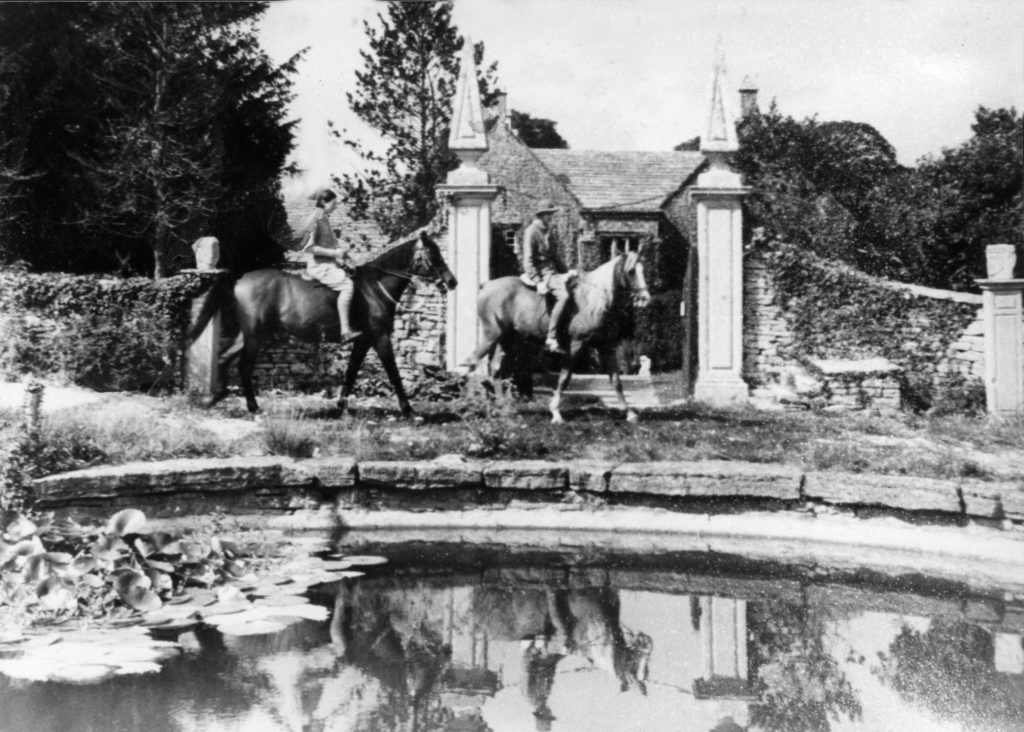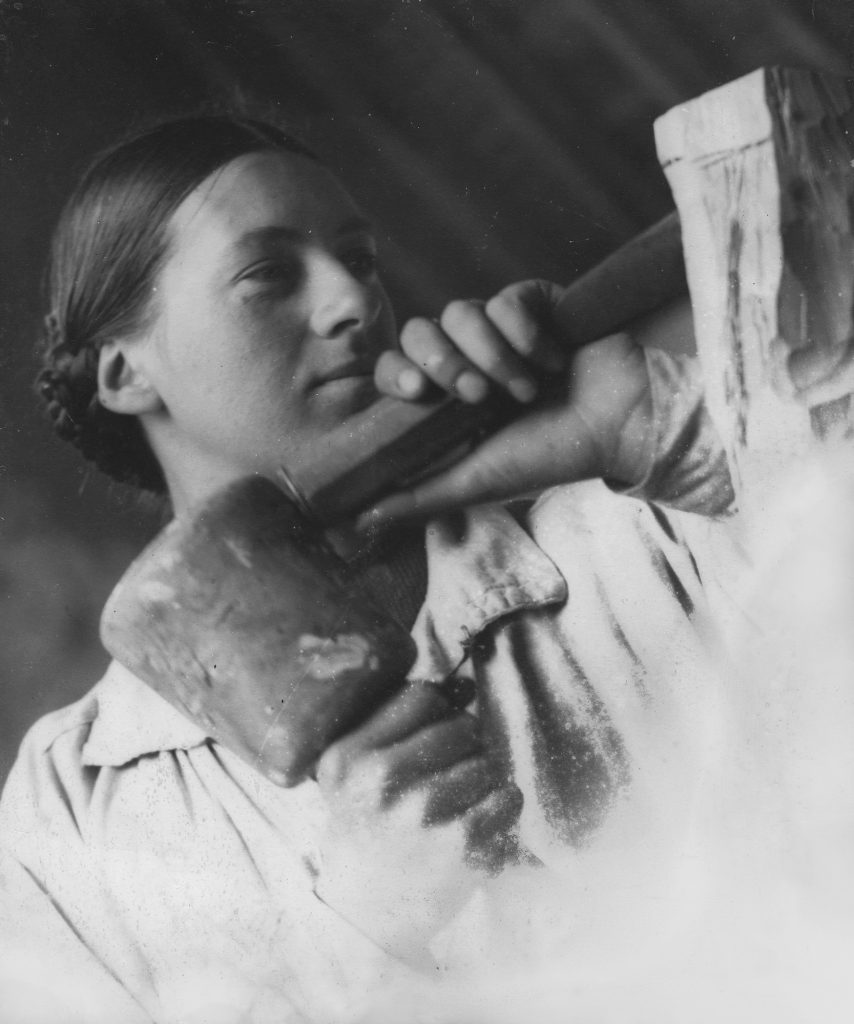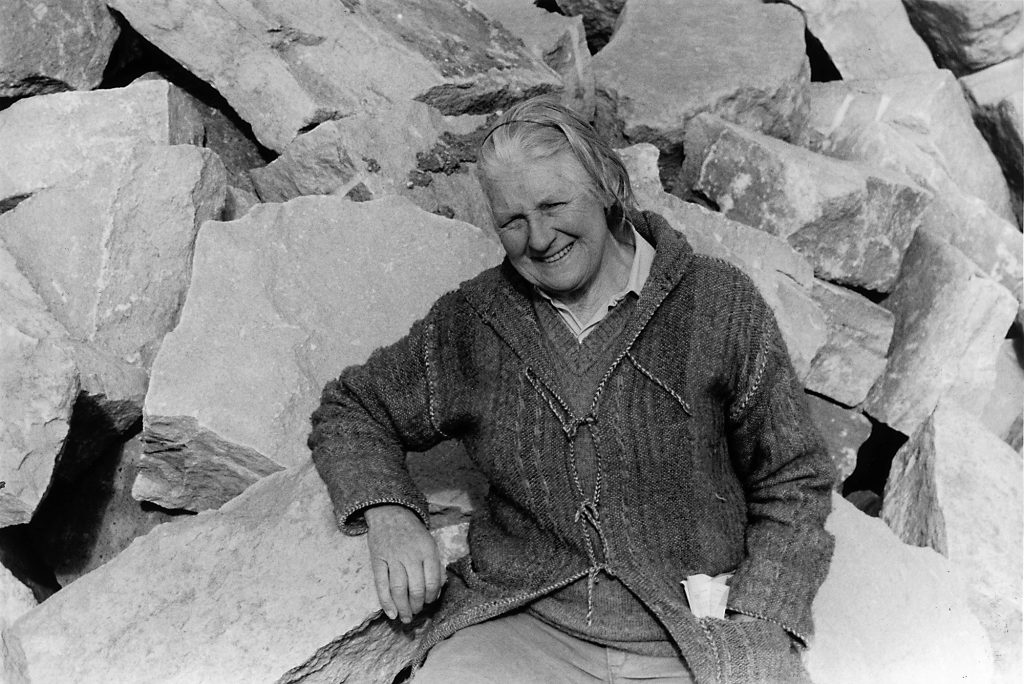Early Years
Mary was the only child of the portrait artist George Spencer Watson RA and his wife Hilda, an expressionist dance performer. George’s studio was at their home in Holland Park Road, London, while Hilda’s studio theatre was in nearby Warwick Road. They socialised with a circle of fellow artists, craftspeople and musicians. Family holidays were spent at Corner Cottage in Studland on the Purbeck coast, where George could paint and they all rode.
In 1923 Hilda and George bought Dunshay Manor in Purbeck, and it became the family’s main residence. Hilda focused on the development of her mime dance performances, training Mary to work with her. Holland Park Road was kept to maintain their professional and social lives, and for George to work on his portrait commissions.
Becoming a sculptor
As a child, during the restoration of Dunshay Manor, Mary would ride on her pony Robin to nearby Lander’s Quarries with orders for stone from Hilda. One day a quarryman handed her some tools to try out on a Purbeck block. The experience shaped the rest of her life and her decision to study sculpture.
- 1928 Bournemouth School of Art, one day a week
- 1929/30 Slade School of Fine Art, London University, to study sculpture
- 1930/34 Royal Academy Schools, where Mary was taught to model set pieces in clay
- 1934/35 Central School of Arts and Crafts, where she learnt to carve under the supervision of John Skeaping, who advocated the principle of truth to materials
- 1938 Mary became a student of Ossip Zadkine at his Paris studio. Zadkine worked in a ‘Cubist style that was greatly influenced by both African and Greek art’ [1]
Living and working at Dunshay
Dunshay was at the heart of Mary’s work. She developed her approach to making figurative sculptures mainly using local materials: Purbeck and Portland stone, native timbers and Dorset clay. Her inspirations came from two sources: the poetry and classical myths that formed the basis for Hilda’s mime dance and the natural world of Dorset.
[1] Musée Zadkine, The Greek source, the rooting of a “land” https://www.zadkine.paris.fr/fr/ossip-zadkine/sa-biographie/la-source-grecque-lenracinement-dune-terre



